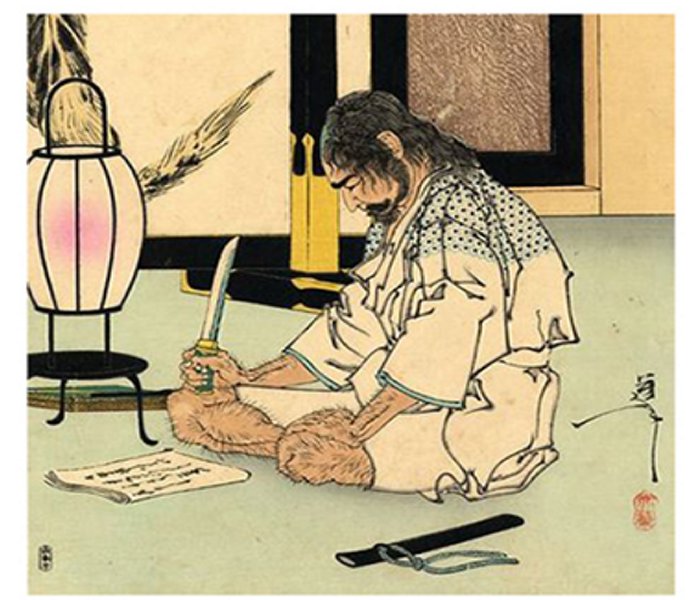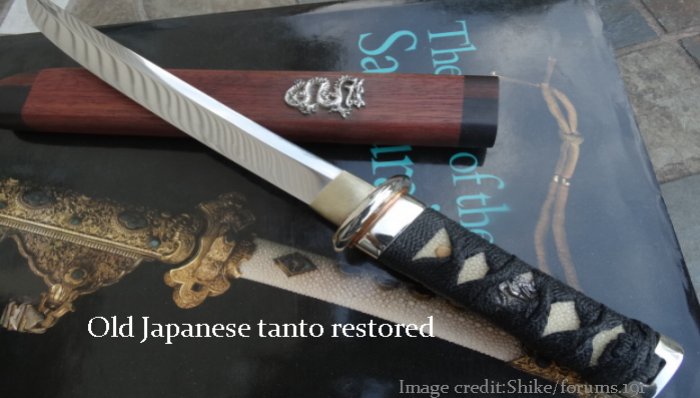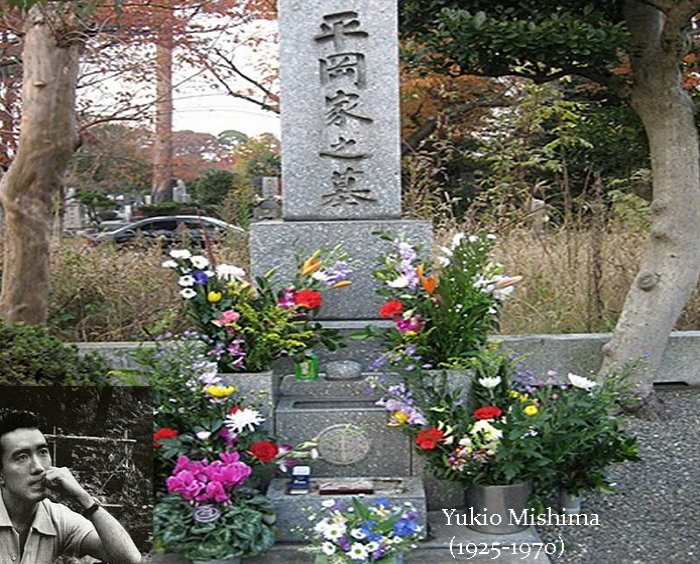Seppuku: Ancient Suicide Ritual That Guaranteed Honorable Death Instead For Life In Shame
A.Sutherland - AncientPages.com - Seppuku is a ritual form of committing suicide in Japanese society.
Many people living in the Western world believe it is a horrible and barbaric act. According to the Japanese way of thinking, however, the seppuku ("cutting the belly") meant an honorable death, which was more desirable than a useless life in shame.
Seppuku's suicide by disembowelment using a samurai sword represents an old Japanese suicide tradition that dates back to the 11th century. The word ‘seppuku’ comes from the words setsu, meaning ‘to cut,’ and fuku meaning ‘abdomen.’
During Japan’s early feudal period, a powerful warrior class was created. These Japanese warriors battled to expand the power and influence of clans in order to protect the autonomy of their lands and create a unified state system.
The tradition of seppuku intensified particularly in the 15th/ 16th century during the period of the Japanese civil wars but it was officially forbidden by two decrees, one introduced in 1603 and another, in 1663.
The Tokugawa shogunate (also called the Edo period, 1603-1867) managed to restore stability and peace in Japan, for over 250 years and reorganized the samurai fiefdoms. The seppuku suicide ritual was no longer officially supported but at the same time, it was saved from the state of being no longer practiced.
During the prolonged period of peace, Tokugawa authorities incorporated seppuku into the rules of conduct for samurai commonly known today as ‘Bushido Code’.
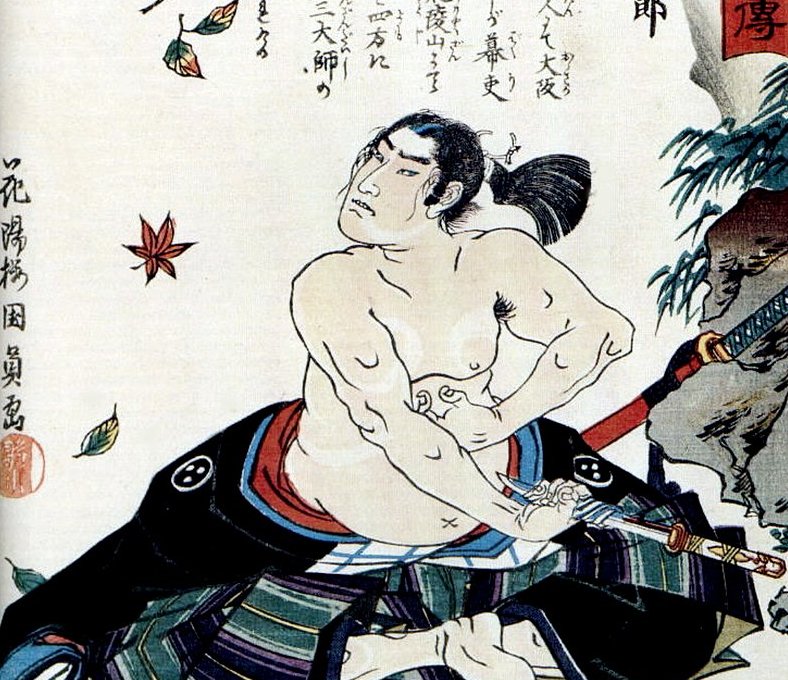
Samurai about to perform seppuku. (edo period (1850-1860)) Image credit: Kunikazu Utagawa/ wikipedia
Despite the abolition, people continuously practiced the ritual, which was considered a true privilege for both samurai warriors and the nobles. There are ancient accounts of defeated enemies who were given a chance to commit suicide and it was considered by them as grace. They were able to keep their honor intact.
The seppuku was once again officially forbidden in 1868.
Reasons That Could Explain The Seppuku
The seppuku was necessary to avoid the shame of falling into the hands of the enemy. It was also considered an honorable punishment. Sometimes it was performed to demonstrate some kind of disagreement or loyalty towards one's deceased lord or husband.
How Did The Procedure Of The Seppuku Look Like?
At first, the suicide candidate (in a white kimono) had to prepare the so-called death poem. Then, he took a short dagger to cut his abdomen by slicing it from the left lower part of his upper body upwards in the right direction.
Then he was expected to lower his neck and ‘the kaishakunin’ (an assistant who was often the best friend was always present during the procedure), had to blow off the seppuku candidate's head - possibly with one strong blow of his sword in order to shorten the man’s very painful suffering.
It happened that the seppuku was performed under extremely uncomfortable conditions on the battlefield.
In that case, there was no time and no suitable place for the seppuku ritual to be performed. The ritual was usually done quickly.
The latest and widely known case of seppuku is from November 1970.
Yukio Mishima (1925-1970), a Japanese author, playwright, actor, film director, and founder of the Shield Society (‘Tatenokai’) a private militia in Japan dedicated to traditional Japanese values and veneration of the Emperor decided to commit suicide.
Mishima, also accomplished in the martial arts, was a controversial man, who deeply honored the Bushido Code values. In 1970, he and three other members of his militia staged an attempted coup d'état when they seized control of a Japanese military base and took the commander hostage, then tried and failed to inspire a coup to restore the Emperor's pre-war powers.
Mishima then committed ritual suicide by seppuku.
Written by – A. Sutherland AncientPages.com Staff Writer
Copyright © AncientPages.com All rights reserved. This material may not be published, broadcast, rewritten or redistributed in whole or part without the express written permission of AncientPages.com
Expand for referencesReferences:
Joseph P. The SAGE Encyclopedia of War: Social Science Perspectives
Rankin A. Seppuku: A History of Samurai Suicide
Niz X. W. Samurai: A Guide to the Feudal Knights
More From Ancient Pages
-
 Earliest Fascinating Concepts Of Artificial Intelligence And Robots In Ancient Myths – Examined
Archaeology | Mar 6, 2019
Earliest Fascinating Concepts Of Artificial Intelligence And Robots In Ancient Myths – Examined
Archaeology | Mar 6, 2019 -
 Who Can Solve The Shackleton Scribble Mystery?
Artifacts | Sep 13, 2017
Who Can Solve The Shackleton Scribble Mystery?
Artifacts | Sep 13, 2017 -
 DNA Shows First Scandinavians Followed Two Distinct Migration Routes
Archaeology | Jan 11, 2018
DNA Shows First Scandinavians Followed Two Distinct Migration Routes
Archaeology | Jan 11, 2018 -
 Medieval Irish Book Fitting Among Historical Finds Unearthed In Old Cemetery In Norway
Archaeology | Dec 15, 2017
Medieval Irish Book Fitting Among Historical Finds Unearthed In Old Cemetery In Norway
Archaeology | Dec 15, 2017 -
 Biblical Cherubim – Sweet Angels Or Dangerous Creatures With A Hidden Agenda?
Ancient Mysteries | Jun 9, 2018
Biblical Cherubim – Sweet Angels Or Dangerous Creatures With A Hidden Agenda?
Ancient Mysteries | Jun 9, 2018 -
 Knights Templar – Strict Rules For Clothing And Eating Habits
Featured Stories | Jan 2, 2018
Knights Templar – Strict Rules For Clothing And Eating Habits
Featured Stories | Jan 2, 2018 -
 On This Day In History: Henry VIII Ascended The Throne Of England – On Apr 22, 1509
News | Apr 22, 2016
On This Day In History: Henry VIII Ascended The Throne Of England – On Apr 22, 1509
News | Apr 22, 2016 -
 Controversial Hollow Earth Theory – Scientific Facts Presented By Researchers – Part 1
Ancient Mysteries | Jun 21, 2019
Controversial Hollow Earth Theory – Scientific Facts Presented By Researchers – Part 1
Ancient Mysteries | Jun 21, 2019 -
 Sargon Of Akkad – Prominent Leader Who Rose Out Of Obscurity
Featured Stories | Jun 7, 2019
Sargon Of Akkad – Prominent Leader Who Rose Out Of Obscurity
Featured Stories | Jun 7, 2019 -
 On This Day In History: Most Notorious Roman Emperor Nero Committed Suicide – On June 9, 68 AD
News | Jun 9, 2016
On This Day In History: Most Notorious Roman Emperor Nero Committed Suicide – On June 9, 68 AD
News | Jun 9, 2016 -
 Saqqara New Discoveries: Fifth Dynasty’s Pyramid Complex That Belonged To Queen Setibhor
Archaeology | Apr 15, 2019
Saqqara New Discoveries: Fifth Dynasty’s Pyramid Complex That Belonged To Queen Setibhor
Archaeology | Apr 15, 2019 -
 Earliest Period Of Warfare In Europe Occurred Over 1,000 Years Earlier Than We Thought
Archaeology | Nov 3, 2023
Earliest Period Of Warfare In Europe Occurred Over 1,000 Years Earlier Than We Thought
Archaeology | Nov 3, 2023 -
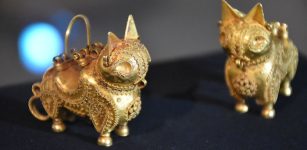 Beautiful Gold ‘Lynx’ Earrings Discovered In The Ruins Of The Ancient Lost City Of Ani Go On Display In 2023
Archaeology | Dec 29, 2022
Beautiful Gold ‘Lynx’ Earrings Discovered In The Ruins Of The Ancient Lost City Of Ani Go On Display In 2023
Archaeology | Dec 29, 2022 -
 DNA Reveals Unique Ancestry Of Inhabitants Of The Angolan Namib Desert
DNA | Oct 3, 2023
DNA Reveals Unique Ancestry Of Inhabitants Of The Angolan Namib Desert
DNA | Oct 3, 2023 -
 Troublesome Momus: Deity Of Irony, Ridicule, Sarcasm And Harmful Jokes In Greek And Roman Mythology
Featured Stories | Mar 14, 2022
Troublesome Momus: Deity Of Irony, Ridicule, Sarcasm And Harmful Jokes In Greek And Roman Mythology
Featured Stories | Mar 14, 2022 -
 Babylonians And Sumerians Had Advanced Knowledge Of Astronomy
Civilizations | Feb 28, 2017
Babylonians And Sumerians Had Advanced Knowledge Of Astronomy
Civilizations | Feb 28, 2017 -
 Florentine Codex: Remarkable Manuscripts About Life Of The Aztecs
Ancient History Facts | Nov 15, 2016
Florentine Codex: Remarkable Manuscripts About Life Of The Aztecs
Ancient History Facts | Nov 15, 2016 -
 Face Of Egyptian Man Who Lived 35,000 Years Ago Reconstructed
Archaeology | Apr 7, 2023
Face Of Egyptian Man Who Lived 35,000 Years Ago Reconstructed
Archaeology | Apr 7, 2023 -
 Machu Picchu Was Built With The Royal Unit System – New Research Suggests
Archaeology | Jan 14, 2021
Machu Picchu Was Built With The Royal Unit System – New Research Suggests
Archaeology | Jan 14, 2021 -
 On This Day In History: Favorite Ship Of King Henry VIII ‘Mary Rose’ Sank – On July 19, 1545
News | Jul 19, 2016
On This Day In History: Favorite Ship Of King Henry VIII ‘Mary Rose’ Sank – On July 19, 1545
News | Jul 19, 2016

